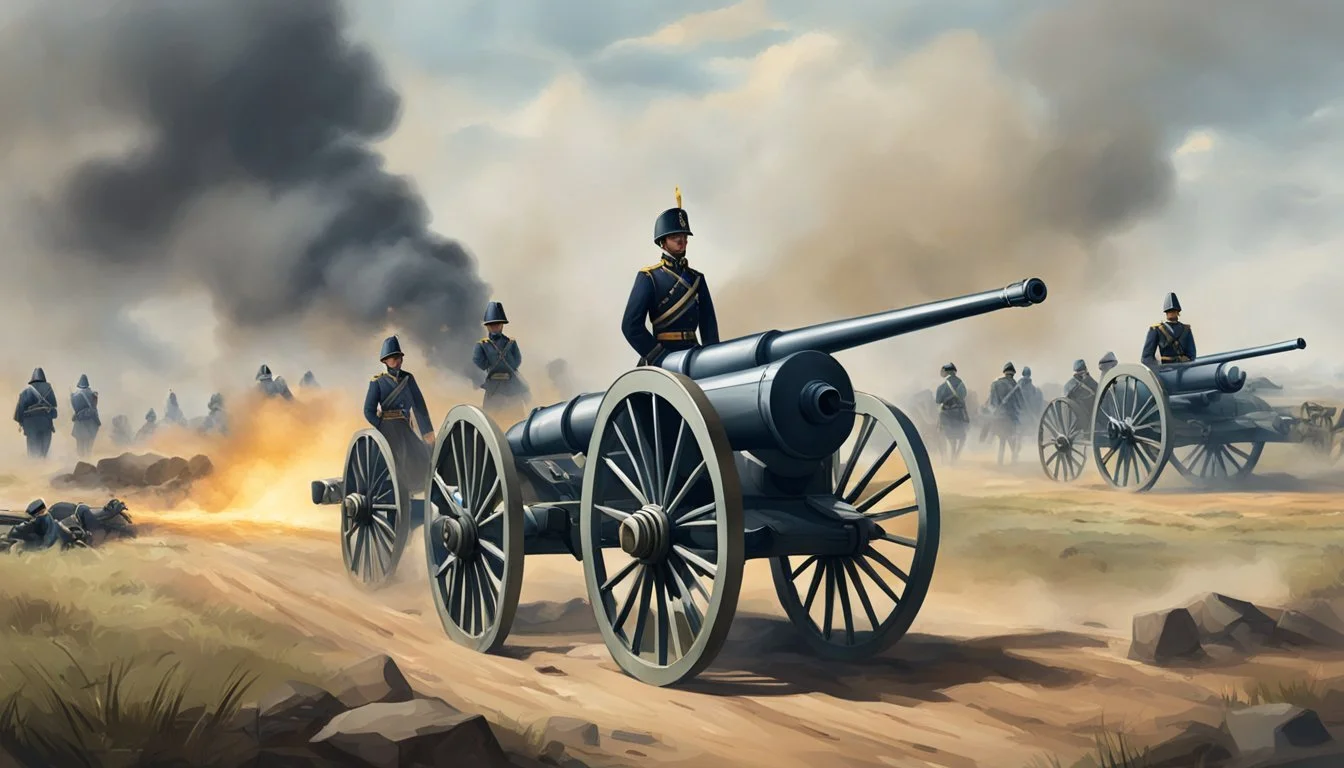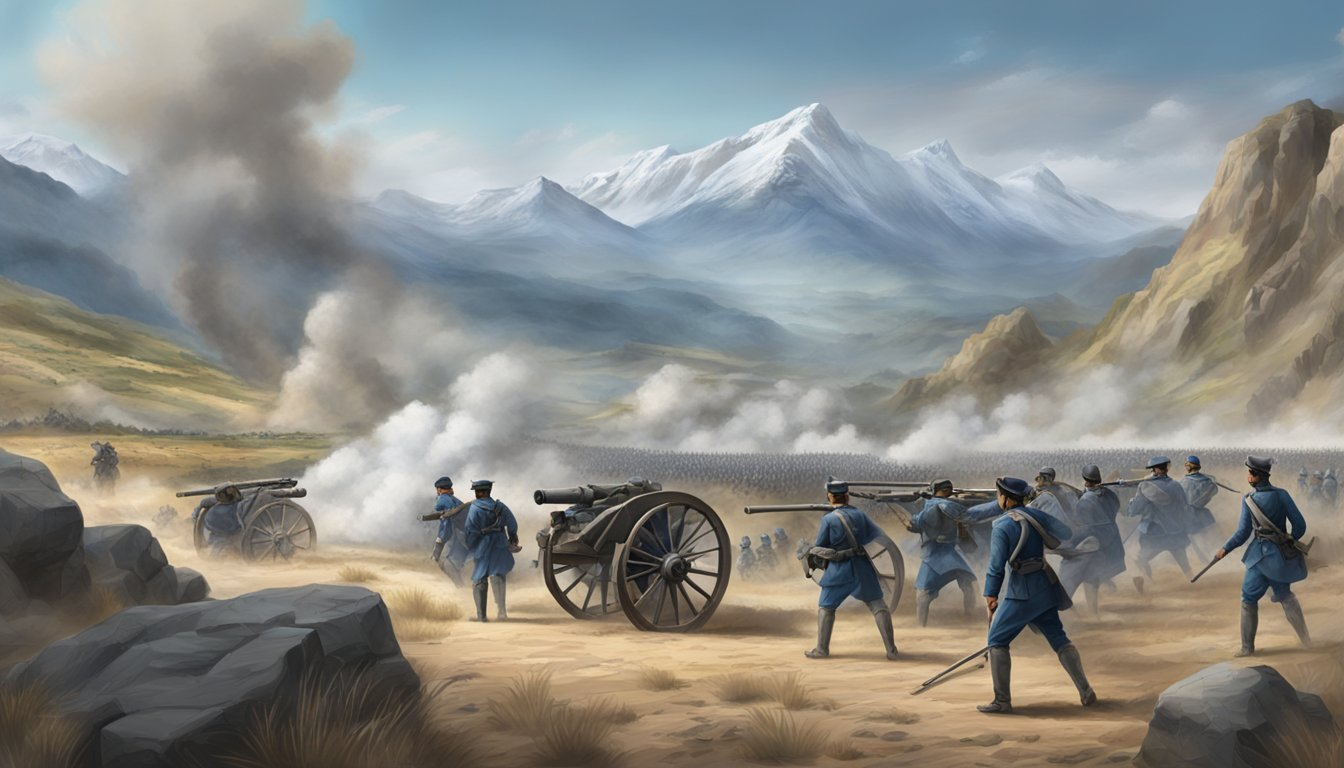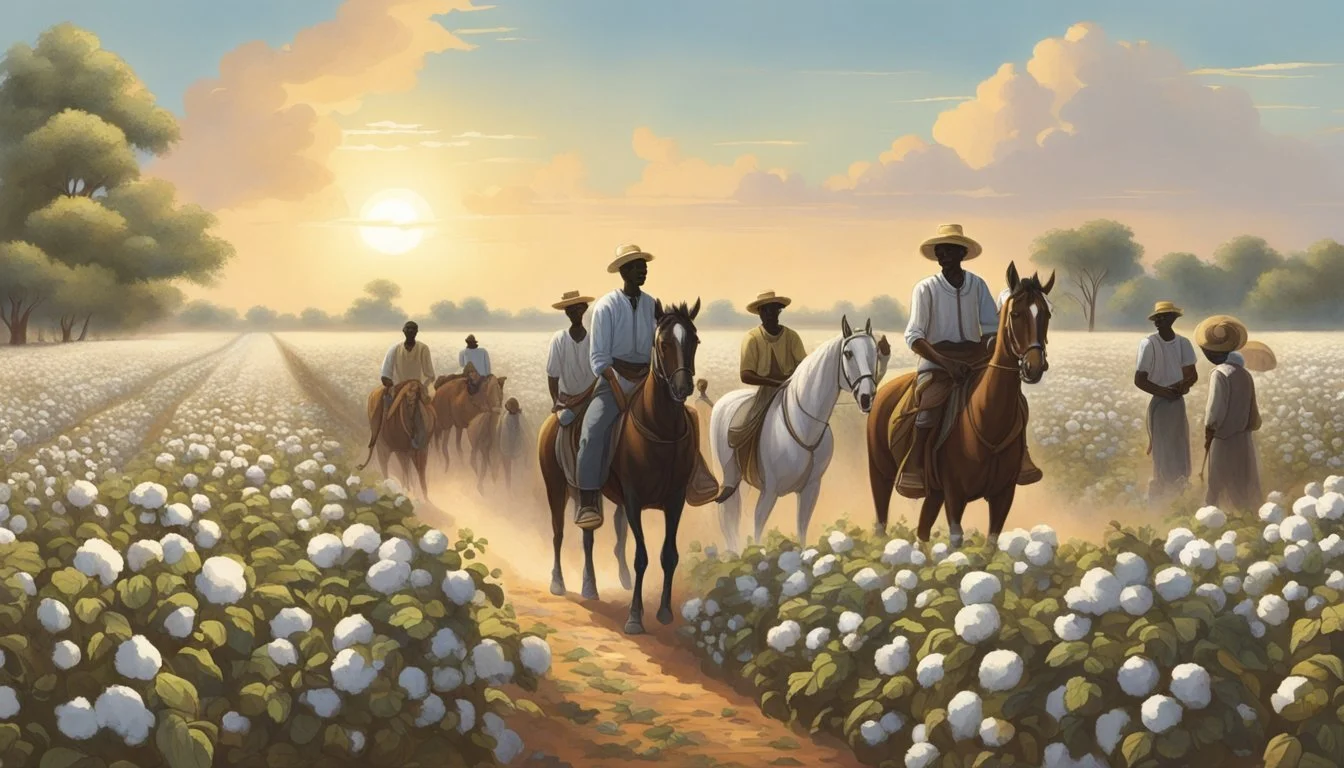7 Films Analyzing the Causes and Consequences of the American Civil War
A Historical Cinema Retrospective
The American Civil War remains a pivotal event in United States history, shaping the nation's trajectory for generations to come. Its causes and consequences continue to be examined and debated by historians, filmmakers, and the public alike. Through the lens of cinema, audiences can gain deeper insights into the complex factors that led to this devastating conflict and its far-reaching aftermath.
Films exploring the Civil War offer unique perspectives on the political, social, and economic issues that divided the nation. By dramatizing key events and personalizing historical figures, these movies bring the past to life in ways that textbooks often cannot. From epic battle scenes to intimate character studies, Civil War films provide viewers with a multifaceted understanding of this crucial period in American history.
1) Gettysburg (1993)
"Gettysburg" is a critically acclaimed epic war film directed by Ronald F. Maxwell. Based on Michael Shaara's Pulitzer Prize-winning novel "The Killer Angels," the movie meticulously recreates the pivotal Battle of Gettysburg during the American Civil War.
The film boasts an ensemble cast, featuring Tom Berenger as James Longstreet, Jeff Daniels as Joshua Chamberlain, and Martin Sheen as Robert E. Lee. It spans over four hours, providing an in-depth look at the strategies, decisions, and heroism that shaped the battle's outcome.
"Gettysburg" is renowned for its attention to historical detail and accuracy. The filmmakers went to great lengths to portray events as they actually occurred, from military tactics to period-appropriate costumes and weaponry.
The movie explores the motivations and personal struggles of key figures on both sides of the conflict. It delves into the complexities of leadership, loyalty, and the human cost of war.
While some minor historical inaccuracies exist, "Gettysburg" remains one of the most respected cinematic portrayals of the Civil War. Its focus on historical authenticity and character development has made it a valuable educational tool and a compelling depiction of this crucial moment in American history.
2) Glory (1989)
Glory stands out as a pivotal film in depicting the American Civil War. Directed by Edward Zwick, it tells the story of the 54th Massachusetts Infantry Regiment, one of the first African-American units in the Union Army.
The movie follows Colonel Robert Gould Shaw, played by Matthew Broderick, as he leads the regiment. It features stellar performances from Denzel Washington, Morgan Freeman, and Cary Elwes as fictional members of the 54th.
Glory sheds light on the often-overlooked contributions of Black soldiers during the Civil War. It portrays their struggles against racism within the Union Army and society at large.
The film culminates in the assault on Fort Wagner, a pivotal battle that demonstrated the bravery and skill of African-American troops. This depiction helped bring attention to a neglected aspect of Civil War history.
Glory won three Academy Awards, including Best Supporting Actor for Denzel Washington. Its impact extends beyond its accolades, as it continues to educate audiences about the complexities of the Civil War era.
The movie's attention to historical detail, including uniforms, battle scenes, and social dynamics, contributes to its enduring relevance as both entertainment and educational material.
3) Cold Mountain (2003)
Cold Mountain, directed by Anthony Minghella, offers a unique perspective on the Civil War through a personal lens. The film follows Confederate soldier W.P. Inman, played by Jude Law, as he deserts the army and embarks on a perilous journey home.
Nicole Kidman portrays Ada Monroe, Inman's love interest, who struggles to maintain her father's farm in his absence. The movie skillfully intertwines their separate yet parallel stories, highlighting the war's impact on both soldiers and civilians.
Set against the backdrop of the conflict, Cold Mountain explores themes of love, survival, and the human cost of war. The film's narrative structure allows viewers to witness the harsh realities faced by those on the home front and the battlefield.
Through its characters' experiences, Cold Mountain presents a nuanced view of the Civil War era. It depicts the complexities of loyalty, duty, and personal conviction during a time of national upheaval.
The movie's portrayal of desertion and the hardships endured by both soldiers and civilians provides insight into the war's far-reaching consequences. Cold Mountain offers a compelling examination of how the conflict affected individuals and communities across the American South.
4) Lincoln (2012)
Steven Spielberg's "Lincoln" focuses on the final months of Abraham Lincoln's presidency and his efforts to pass the 13th Amendment, abolishing slavery. The film portrays the political maneuvering and personal struggles Lincoln faced during this critical period.
Daniel Day-Lewis delivers a powerful performance as Lincoln, capturing his wit, wisdom, and determination. The movie highlights the complex negotiations and compromises required to secure votes for the amendment's passage.
"Lincoln" offers a nuanced view of the Civil War's political landscape, showcasing the diverse opinions within Lincoln's own party and the opposition he faced. It depicts the president's strategic approach to both the war and emancipation.
While generally praised for its historical accuracy, some aspects of the film have been debated by historians. The portrayal of certain characters and the condensed timeline of events have been subjects of discussion.
The film provides insight into Lincoln's leadership style and the challenges of governance during wartime. It emphasizes the importance of political skill in achieving significant social change.
5) 12 Years a Slave (2013)
12 Years a Slave, directed by Steve McQueen, is based on Solomon Northup's 1853 memoir. The film portrays Northup's harrowing experience as a free African American man kidnapped and sold into slavery in 1841.
Set against the backdrop of antebellum America, the movie provides a raw depiction of life on Southern plantations. It explores the brutal realities of slavery through Northup's relationships with fellow slaves, captors, and allies.
The film's unflinching portrayal of slavery's cruelty and injustice sheds light on one of the primary causes of the American Civil War. It illustrates the deep-rooted racial tensions and economic disparities that eventually led to the conflict.
12 Years a Slave achieved both critical acclaim and commercial success. It resonated with audiences worldwide, grossing $150 million internationally and $57 million domestically.
The movie serves as a powerful cultural symbol, bringing to life the experiences of enslaved individuals in pre-Civil War America. It offers a stark reminder of the human cost of slavery and its lasting impact on American society.
6) The Red Badge of Courage (1951)
The Red Badge of Courage, directed by John Huston in 1951, brings Stephen Crane's classic Civil War novel to the screen. This MGM production features a screenplay adapted by Huston himself, with cinematography by Harold Rosson and a score by Bronislau Kaper.
The film follows a Union soldier thrust into battle without proper preparation. Initially fleeing from combat, he seeks to redeem himself and prove his courage. Huston employs the film noir style popular at the time to tell this tale of fear and bravery.
At the height of his cinematic powers, Huston approached this project after directing acclaimed films like The Maltese Falcon and Treasure of Sierra Madre. His take on the Civil War reflects Hollywood's typical pre-civil rights movement perspective on the conflict.
The Red Badge of Courage offers a complex portrayal of wartime courage, though some critics question its definition of bravery. The film's production process became the subject of Lillian Ross's renowned piece of reportage, "Picture," published in The New Yorker.
7) The Birth of a Nation (2016)
Nate Parker's "The Birth of a Nation" retells the story of Nat Turner's 1831 slave rebellion. The film shares its title with D.W. Griffith's controversial 1915 epic, deliberately contrasting its perspective on race relations in America.
Set against the backdrop of antebellum slavery, the movie explores the factors that led to Turner's uprising. It portrays the harsh realities of slavery and its devastating impact on African American families and communities.
The film depicts Turner's transformation from a preacher used to pacify slaves to a revolutionary leader. It highlights the role of religious ideology in both justifying slavery and inspiring resistance.
"The Birth of a Nation" connects the events of 1831 to the larger context of the American Civil War. The final scene links Turner's rebellion to the eventual fight for emancipation, showing a young witness to Turner's execution later serving as a Union soldier.
Parker's work seeks to reframe the narrative around slave rebellions and their place in American history. It presents Turner's actions as a response to systemic oppression and a precursor to the Civil War.
Historical Context of the American Civil War
The American Civil War emerged from deep-rooted economic disparities and political tensions between the North and South. These factors culminated in a devastating conflict that reshaped the nation's future.
Economic and Social Factors
The North and South developed distinct economic systems. Northern states industrialized rapidly, embracing manufacturing and commerce. Southern states relied heavily on agriculture, particularly cotton production fueled by slave labor.
This economic divide created divergent social structures. The North saw a growing middle class and influx of immigrants. The South maintained a hierarchical society based on plantation agriculture and slavery.
Slavery became the central point of contention. While Northern states gradually abolished slavery, Southern states fiercely defended the institution as vital to their economy and way of life.
Key Political Conflicts
States' rights versus federal power emerged as a major issue. Southern states advocated for greater autonomy, while the federal government sought to preserve national unity.
The Missouri Compromise of 1820 attempted to maintain a balance between free and slave states. This fragile arrangement broke down with the Kansas-Nebraska Act of 1854, allowing new territories to decide on slavery through popular sovereignty.
The election of Abraham Lincoln in 1860 proved a tipping point. His Republican Party opposed the expansion of slavery, prompting Southern states to secede and form the Confederacy.
Cinematic Representation of Civil War Causes
Films depicting the American Civil War often grapple with the complex factors that led to the conflict. Their portrayals of slavery and abolitionism play a crucial role in shaping public understanding of this pivotal period in U.S. history.
Depiction of Slavery and Abolitionism
Many Civil War films struggle to accurately represent the centrality of slavery to the conflict. Some movies downplay its role, focusing instead on other factors like states' rights or economic differences.
More recent productions have attempted to address this imbalance. "12 Years a Slave" (2013) unflinchingly portrays the brutal realities of the slave system. "Lincoln" (2012) highlights the political maneuvering required to pass the 13th Amendment abolishing slavery.
However, as noted in the search results, there remains a "dearth of abolitionist sentiment" in many Civil War films. This reflects an ongoing challenge in cinematic depictions of the war's causes.
Some movies like "Glory" (1989) showcase the contributions of African American soldiers to the Union cause, indirectly addressing slavery's role in motivating their participation.



